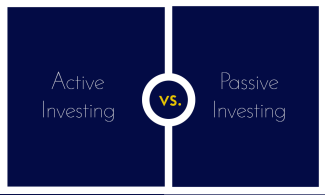
Fifty Shades of Funds: An Investment Strategy for Every Taste
CFP Board provides considerations when choosing between index and actively-managed funds.
Once upon a time, investors chose between two starkly different investment fund options: traditionally “plain vanilla” index funds and broad-spectrum actively managed funds. But over the last decade, funds incorporating aspects of both – such as Smart Beta funds and ETFs – have emerged, leaving investors with more options than ever. CFP Board offers guidance to help investors navigate the rapidly shifting fund landscape.
As a starting point, the following typical investor profiles might consider these types of funds:
- Young Investors: Mutual funds offer children and teens ample diversification at modest levels of investment. Managed funds often have a “story” behind their holdings that can be much more exciting and entertaining for younger investors than an S&P 500 index.
- First-Time 401(k) Participants: A broad index fund provides low volatility and instant diversification without much active thought or monitoring – just the right amount of work for a new participant managing all of the financial decisions that come with a new job.
- High Tax Bracket Investors: This investor is likely to have a number of different investment accounts. To minimize annual taxable income, he or she might utilize index funds for taxable accounts and put favorite high-performing managed accounts into tax-deferred or tax-free accounts, to minimize annual taxable income from investments.
- Socially Responsible Investors: Investors that are passionate about a cause, such as women’s rights or environmental preservation, can invest in managed funds that align with their interests.
- Plug and Play Investors: Managed funds can make more sense for investors who want a fund that adjusts as he or she gets closer to a life milestone, such as college or retirement. Other managed funds take care of asset allocation, rebalancing and risk management, as opposed to the investor choosing a variety of funds and adjusting his or her holdings in each.
- Hedgers: To mitigate particular types of risk, such as rising medical care costs in retirement, an index can be a smart investment. However, be cautious, as narrowly targeted indexes can be inherently high-risk and volatile.
There’s a fund that suits every type of investor. An investor can be successful utilizing either type of fund as long as it aligns with their individual needs and goals. Rather than simply examining fund prospectuses, seek the counsel of a CFP® professional, who puts your interests first and can help you find the fund that’s right for your situation.
ABOUT CFP BOARD
The mission of Certified Financial Planner Board of Standards, Inc. is to benefit the public by granting the CFP® certification and upholding it as the recognized standard of excellence for competent and ethical personal financial planning. The Board of Directors, in furthering CFP Board’s mission, acts on behalf of the public, CFP® professionals and other stakeholders. CFP Board owns the certification marks CFP®, Certified Financial Planner™, CFP® (with plaque design) and CFP® (with flame design) in the U.S., which it awards to individuals who successfully complete CFP Board’s initial and ongoing certification requirements. CFP Board currently authorizes nearly 73,000 individuals to use these marks in the U.S.
Blue Ocean Global Wealth intends the contents of this article will be viewed for informational and educational purposes only. The information in this article is not intended as tax, legal, or investment advice. It may not be used for the purpose of avoiding any federal tax penalties. Please consult legal or tax professionals for specific information regarding your individual situation. The opinions expressed and information provided are for general purposes only, and should not be considered a solicitation for the purchase or sale of any security or investment.
Images, content, and published articles are for reference and illustrative purposes only. Under no circumstances should any image, logo, content or article be viewed as an endorsement. This article is for educational purposes only. Under no circumstances should the information provided herein be relied upon as legal, tax, or investment advice.

